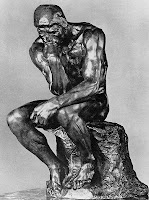In modern economy, an insight, based on
explicit and tacit knowledge and the wisdom are the main driving factors for
value-added creation and sustainable growth. With appropriate understanding and
the allocation of resources Violeta Bulc (innovator, entrepreneur and founder
of Vibacom Ltd.) describes how the creation of added value in a company can be
defined as a progression of different evolutionary stages in the business
environment.
 In the book “Rhythms of business evolution,
systems, tools and experience for brainstorming” Bulc bases her ideas on four
phases. The first one begins with the most fundamental “working environment”. At
this stage companies are mostly focused on production and activities. Machines (equipment)
are very important; the labor force can be relatively easily replaced, so they
should be obedient and diligent in maximizing the output at the lowest costs
possible.
In the book “Rhythms of business evolution,
systems, tools and experience for brainstorming” Bulc bases her ideas on four
phases. The first one begins with the most fundamental “working environment”. At
this stage companies are mostly focused on production and activities. Machines (equipment)
are very important; the labor force can be relatively easily replaced, so they
should be obedient and diligent in maximizing the output at the lowest costs
possible.
The second phase is a “learning environment”. The
productivity becomes a factor of input. New resources and knowledge start to
play a major role as quality is introduced. Knowledgeable workers become of
core importance. Those who have knowledge - employees, leaders, managers -
create the conditions for further growth and differentiation on the market.
 Lately an “innovative environment” is starting
to be used in several mostly Internet-centered organizations, like Google for
example. Creativity becomes a key source and innovation is a key driver of value
added for a long-term and stable growth. The key responsibilities of the
leadership are guidance, coordination, motivation, and communication. A
structure of hierarchy is slowly replaced by a formal network structure.
Lately an “innovative environment” is starting
to be used in several mostly Internet-centered organizations, like Google for
example. Creativity becomes a key source and innovation is a key driver of value
added for a long-term and stable growth. The key responsibilities of the
leadership are guidance, coordination, motivation, and communication. A
structure of hierarchy is slowly replaced by a formal network structure.
Last phase, not surprising, is an “environmental
awareness”. Now the innovation has become an entry factor. Insight, based on
explicit and tacit knowledge and wisdom are the main driving factors for
value-added creation and sustainable growth.
 For each new phase to come into force there needs to be a vital driving force from its predecessors. Each evolutionary
phase requires different tools, methodologies, and techniques. What’s more,
there should be new models of successful leadership evolved during a transition
from one developmental phase to another. To carry out their responsibilities,
leaders need to obtain recent relevant information that is hidden in people as
tacit knowledge and is widely scattered within and outside the organization.
They have to make decisions based on information that is both overwhelming and
incomplete, and they sometimes need to get cooperation from people over whom
they have no formal authority. The pattern of interactions with subordinates,
peer superiors, and outsiders is affected by a leader’s dependency on these
people, by the demands they make on a leader, and by the leader’s style.
For each new phase to come into force there needs to be a vital driving force from its predecessors. Each evolutionary
phase requires different tools, methodologies, and techniques. What’s more,
there should be new models of successful leadership evolved during a transition
from one developmental phase to another. To carry out their responsibilities,
leaders need to obtain recent relevant information that is hidden in people as
tacit knowledge and is widely scattered within and outside the organization.
They have to make decisions based on information that is both overwhelming and
incomplete, and they sometimes need to get cooperation from people over whom
they have no formal authority. The pattern of interactions with subordinates,
peer superiors, and outsiders is affected by a leader’s dependency on these
people, by the demands they make on a leader, and by the leader’s style.
For the most part, we do not yet bring insight,
based on explicit and tacit knowledge, and wisdom, creativity, or a broader
usage that would add new value to our processes when we use these tools. The
younger generation does almost not know how to live without being connected all
the time. And all this has created huge differences that are hard to grasp by
either generation.

No comments:
Post a Comment
Note: Only a member of this blog may post a comment.